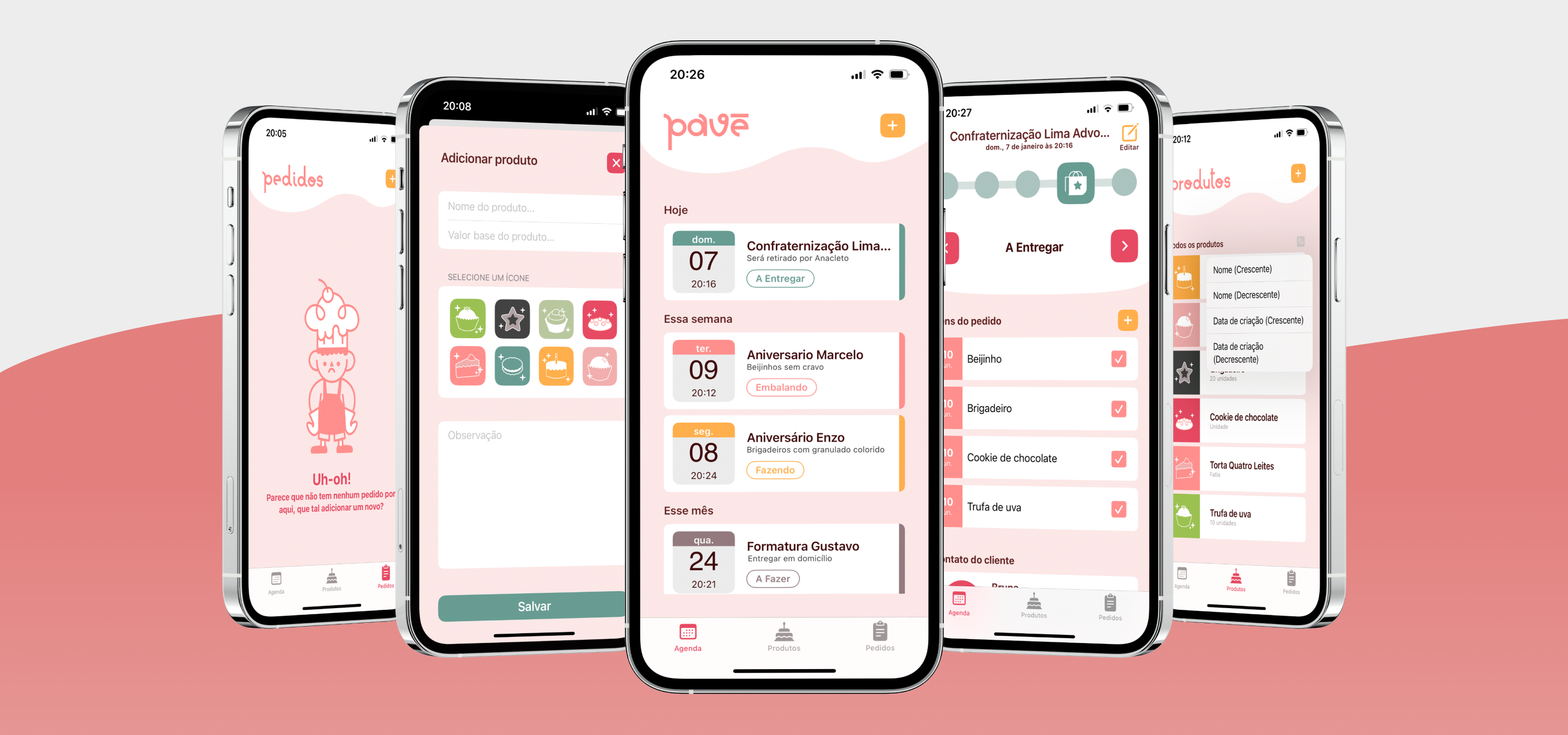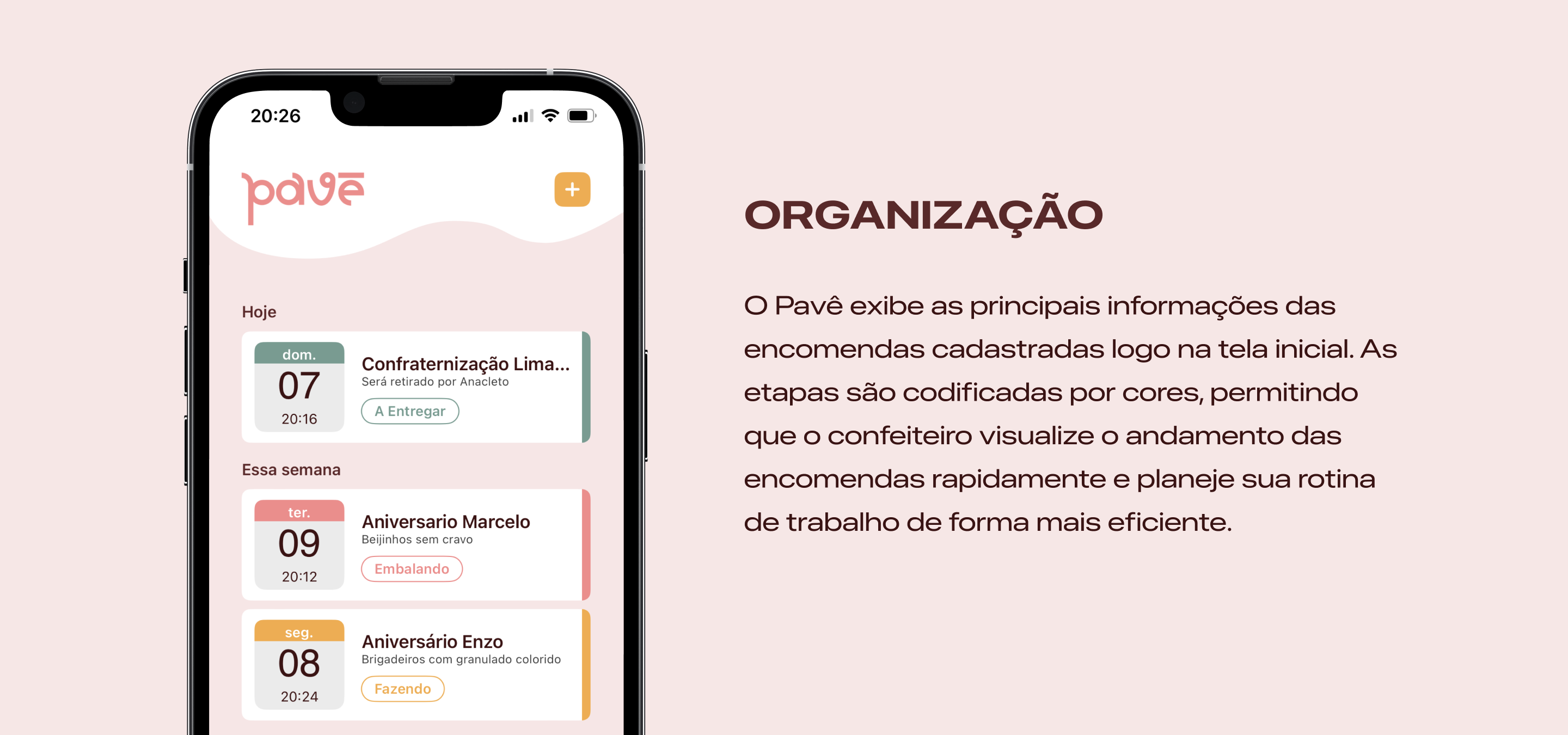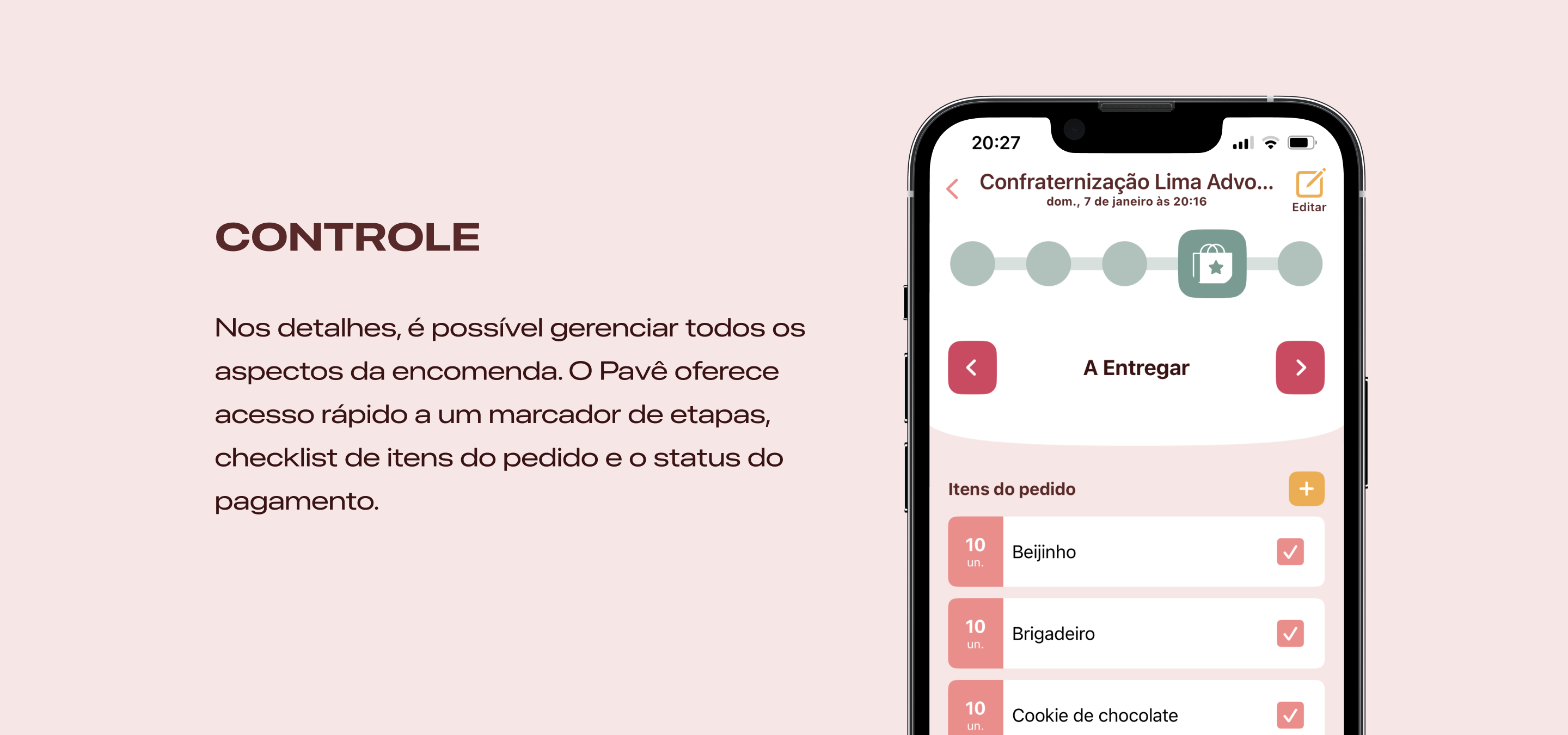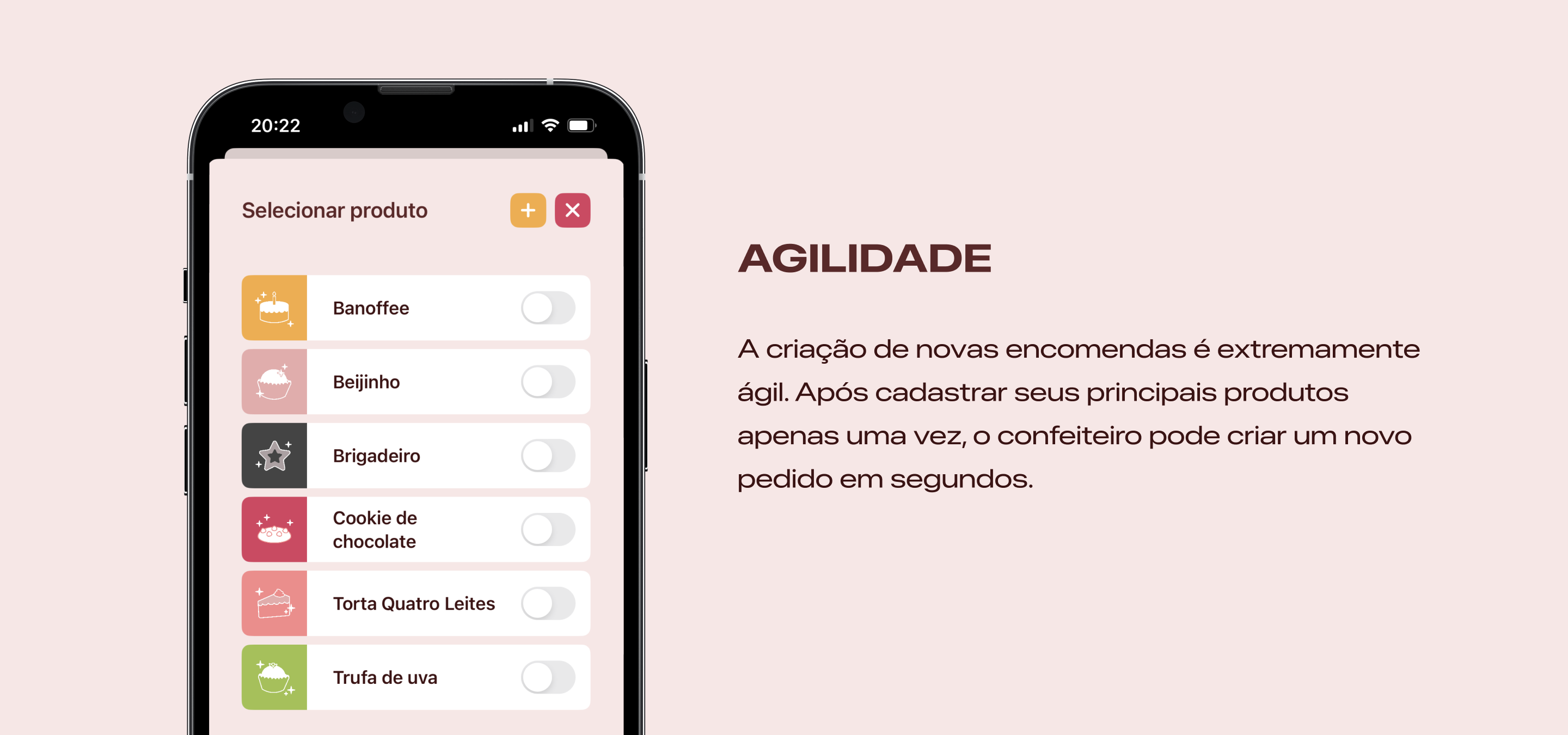Discovery
During the discovery phase, I conducted a detailed analysis of the current confectionery market landscape, with a focus on independent pastry chefs. Through a series of semi-structured interviews with potential users, I sought to understand their experiences in the field, work routines, and main challenges.
One standout finding from the interviews was that despite using digital tools for some administrative tasks, most interviewees still relied on pen and paper to record their orders. This prompted the team to analyze existing digital solutions and listen to entrepreneurs using them, revealing the main weakness of these tools: they are not designed for small-scale operations.
Existing digital solutions function as complete ERP (Enterprise Resource Planning) systems, requiring solo entrepreneurs to constantly feed the platform with inventory, financial, and tax data. Besides the high financial cost of these solutions, pastry chefs also spend a lot of time on bureaucratic processes that do not bring significant benefits to a small business.
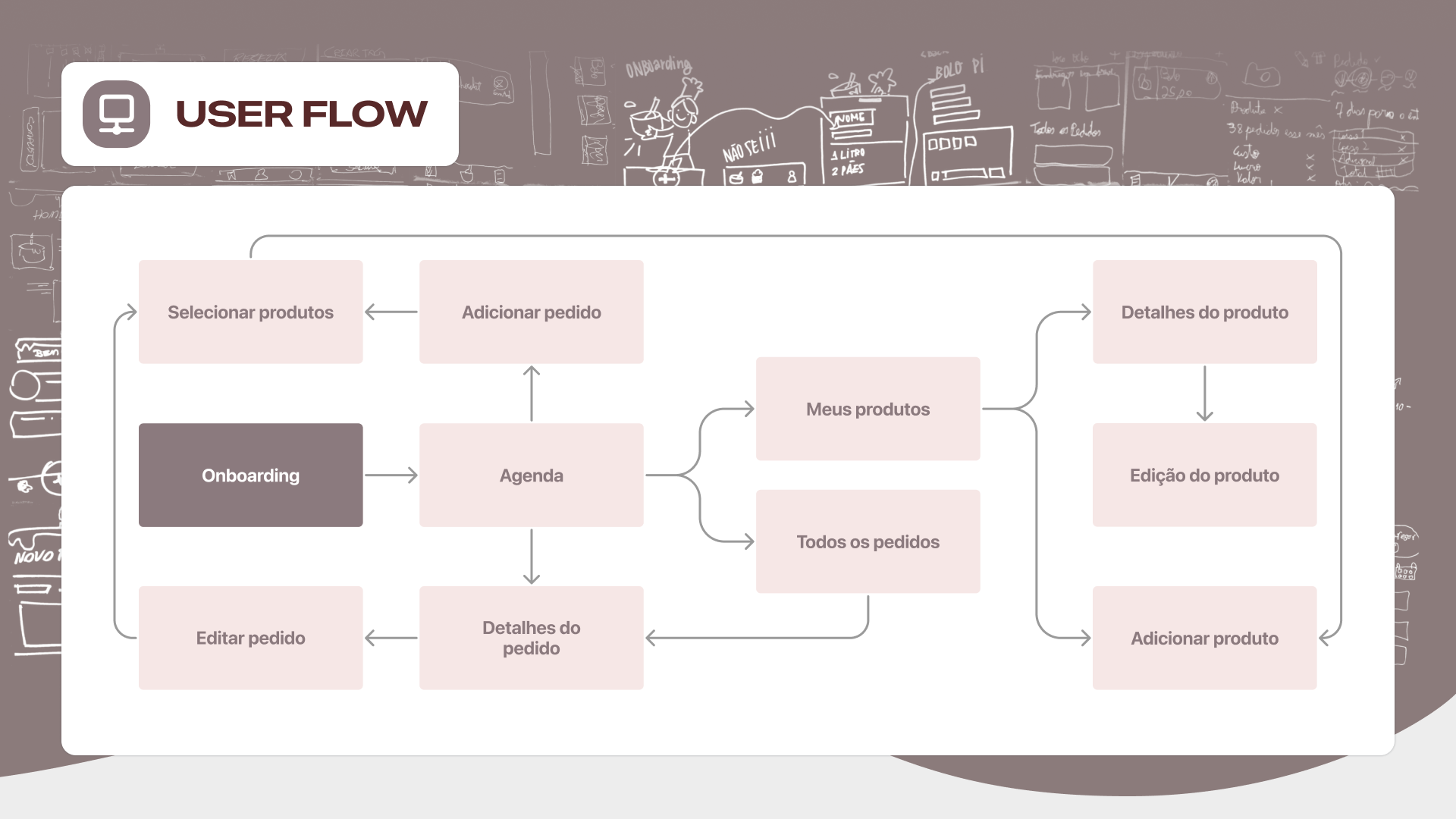
Ideation
After dissecting the information gathered during the research process, the project's goal became clear: to bring the convenience of digital solutions to independent pastry chefs, without the complexity and high cost of an ERP. Thus, simplicity, accessibility, and usability were defined as the fundamental pillars of the solution.
Since the interviewees already managed their financial and inventory control through specialized spreadsheets, the team concluded that the area that would most benefit from digitization would be order management.
Several brainstorming sessions were held to conceptualize features that would make order management more dynamic, defining the app's functionalities and prioritizing those that would have the most impact on the user's routine without adding too much complexity to the project. Still in the ideation phase, the team planned the app's navigational flow and began developing low-fidelity prototypes, using Crazy 8's and other rapid prototyping methodologies.
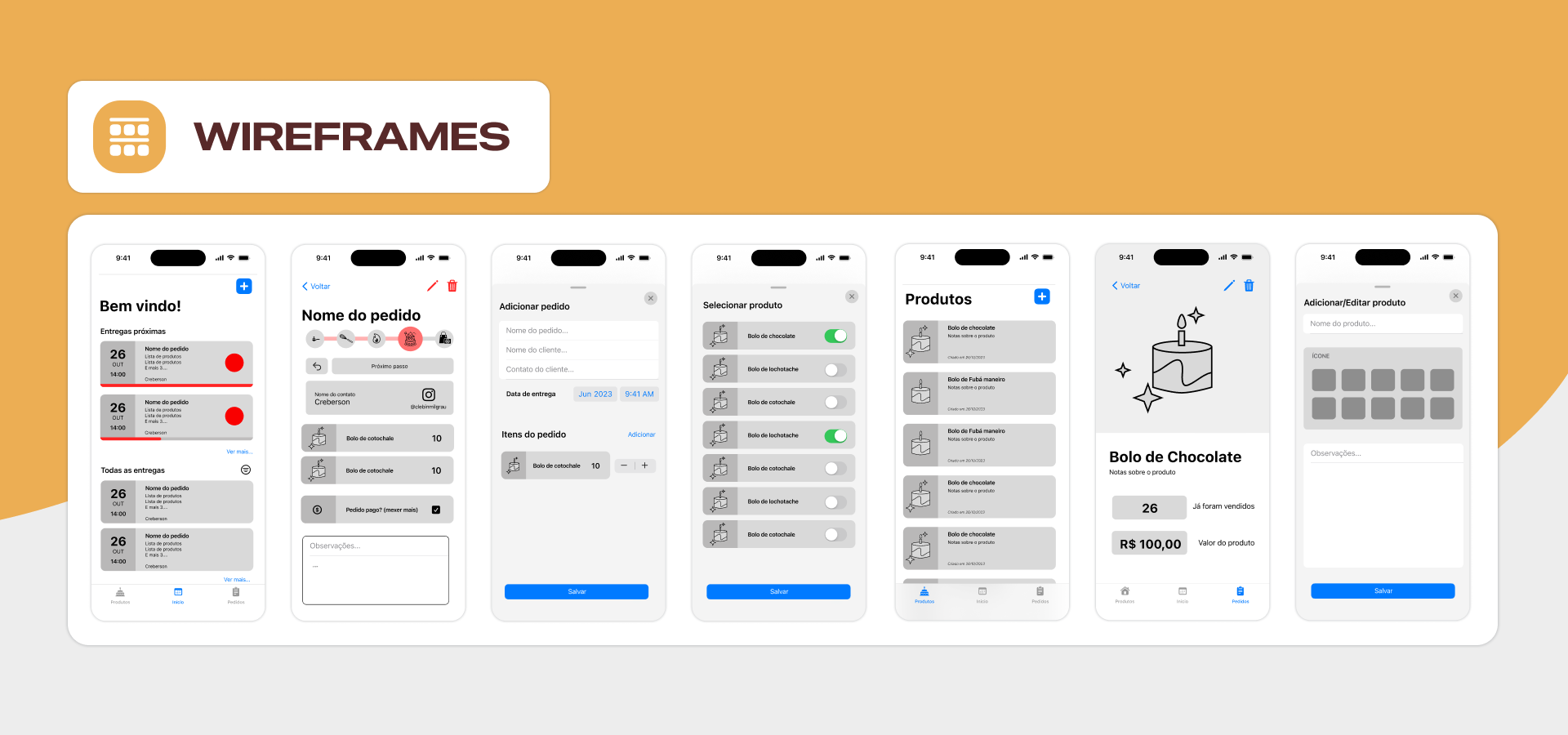
Conception
The prototyping process was guided by rapid iterations on low-fidelity wireframes, allowing us to explore ideas quickly and efficiently refine the design.
To expedite the information architecture delivery, the team opted to use components and colors from the HIG (Human Interface Guidelines) in the prototype. We also mapped all necessary graphic elements, such as icons and illustrations, for the final project version. Additionally, we explored different alternatives to create customized components that would meet specific design needs, aiming to provide a unique and intuitive experience for users.
In addition, the design team collaborated closely with developers to ensure the technical feasibility of proposed solutions and maintain a user-centered approach throughout all development stages.
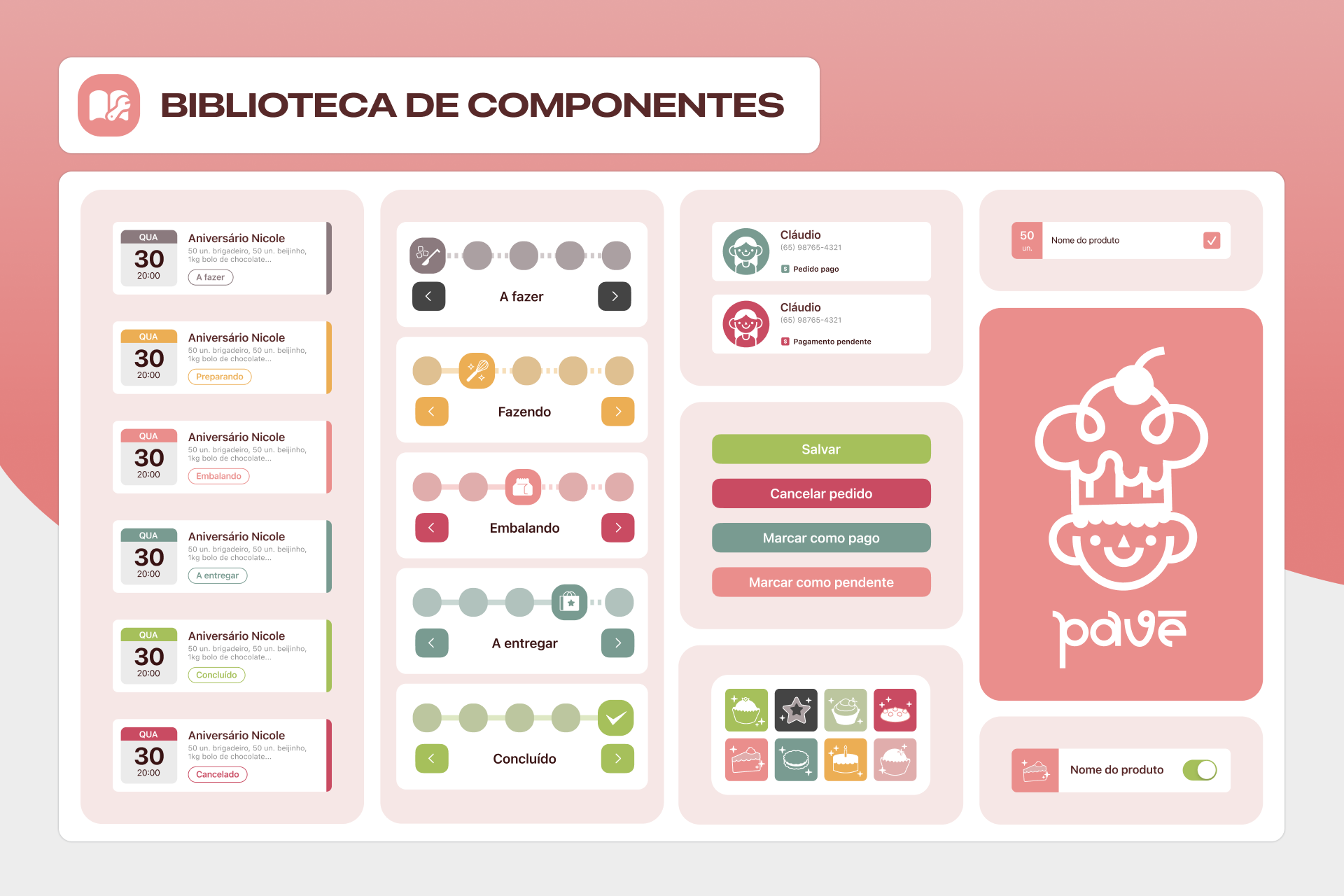
Delivery
After building the prototype, we conducted usability tests with pastry chefs who fit the target audience. During these tests, we identified the need to add captions to some icons, refine the order creation flow, and implement an onboarding process to contextualize the user.
To determine which adjustments would be prioritized for version 1.0, we used an effort/impact matrix to coordinate the implementation of the most valuable adjustments for users. Additionally, we mapped user interest in future features to guide the project's ongoing development.
With the final release version completed, the design team focused efforts on creating promotional materials for launch on the App Store. Highlight images and clear, concise descriptive texts were developed to communicate the app's benefits and functionalities.
Initial feedback was extremely positive, with users praising Pavê's ease of use and usefulness in their work routines. The team continues to closely monitor the app's performance and collect feedback to guide future iterations and improvements, ensuring that Pavê continues to evolve to simplify the work routines of independent pastry chefs.


